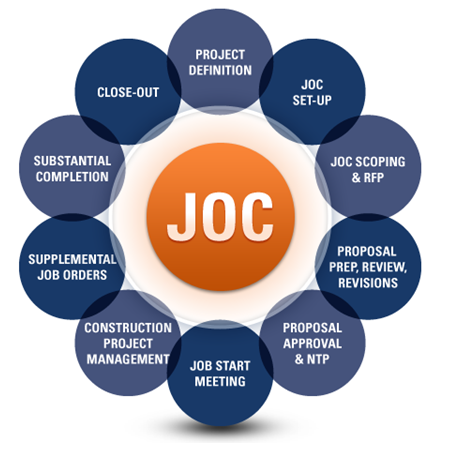“Successful implementation of multifunctional teams requires a fundamental redesign of the entire organization” (Larman, 2008).
Efficient, collaborative, transparent, and continuously improving business processes, associated metrics and supporting technologies are the path to higher productivity within the construction sector.
To date, far too much effort and time is being spent “in the weeds” relative to BIM and/or upon 3D visualization, vs. efficient workflows leading to enhanced decision support, better planning, and higher overall return on investment.
Collaborative construction delivery methods such as Integrated Project Delivery, IPD, Job Order Contracting, JOC, and Public Private Partnerships ,PPP are fundamental requirements in resolving excessive and pervasive waste across the architecture, engineering, construction, and operations sector, AECO/AECOO.
Hallmarks of efficient project delivery methods include elements of the following:
- Early and Ongoing Information-sharing among Project Stakeholders and point establishment of project goals
- Qualifications Based or Best Value Selection
- Selecting Members of Functional Teams
- Mentoring of Team Members with a Goal of Continuous Improvement
- Provision and Allocation of Resources
- Some Form of Cost/pricing Transparency
- Financial Oversight combined with Some Form of Shared Risk/Reward
- Shared Audit/Oversight/Dispute Resolution
Collaboration
Work groups have no need or opportunity to engage in collective work that requires joint effort. So their performance is merely the summation of each group member’s individual contribution. There is no positive synergy that would create an overall level of performance greater than the sum of the inputs. A work team, on the other hand, generates positive synergy through coordinated effort. The individual efforts result in a level of performance greater than the sum of those individual inputs (Robbins, 2011).
Long Term Relationships
Research findings overwhelmingly support the proposition that teams with stable membership have healthier dynamics and perform better than those that constantly have to deal with arrival of new members and the departure of veterans (Hackman, 2011).
Goal Setting
“Successful teams translate their common purpose into specific, measurable, and realistic performance goals. These goals help maintain their focus on getting results” (Robbins,
2007).
Transparency and Trust Enhance Productivity
Trust is based on a mutual understanding of other’s intentions and appreciation of their needs and desires.
Members of effective teams trust each other. They also exhibit trust in their leaders. Interpersonal trust among team members facilitates cooperation, reduces the need to monitor each others’ behavior, and bonds members around
the belief that others on the team won’t take advantage of them. Team members are more likely to take risks and expose vulnerabilities when they believe they can trust others on their team. …[T]rust is the foundation of leadership. It allows
a team to accept and commit to its leader’s goals and decisions (Robbins, 2011).
Relevant aspects from lean techniques…(Ashcraft, 2011)
- Deliver something useful to the client; check what they value;
- Cultivate committed stakeholders;
- Employ a leadership-collaboration style;
- Build competent, collaborative teams;
- Enable team decision making;
- Use short time-boxed iterations to quickly deliver features;
- Encourage adaptability;
- Champion technical excellence; and
- Focus on delivery activities, not process-compliance activities.
Relevant Aspects from scrum…(Ashcraft, 2011)
- Commitment— Be willing to commit to a goal. Scrum provides people all the authority they need to meet their commitments.
• Focus— Do your job. Focus all your efforts and skills on doing the work that you’ve committed to doing.
• Openness—Scrum keeps everything about a project visible to everyone.
• Respect—Individuals are shaped by their background and their experiences. It is
important to respect the different people who make up a team.
• Courage—Have the courage to commit, to act, to be open, and to expect respect.



